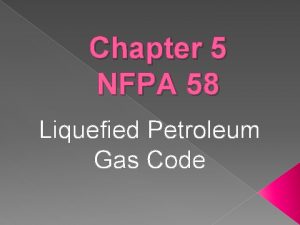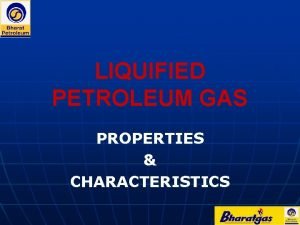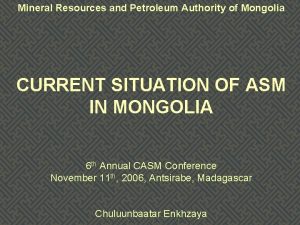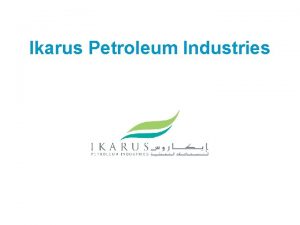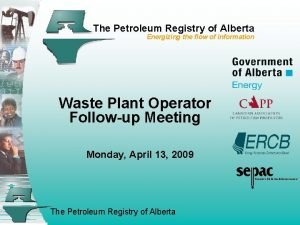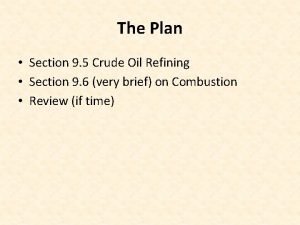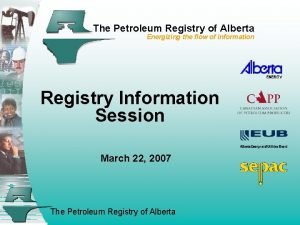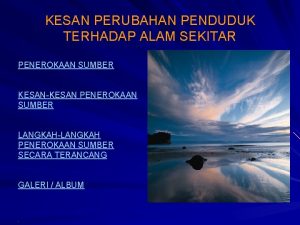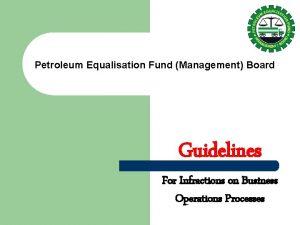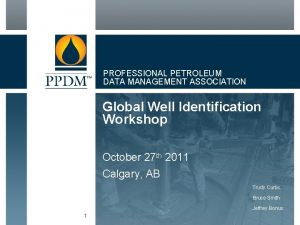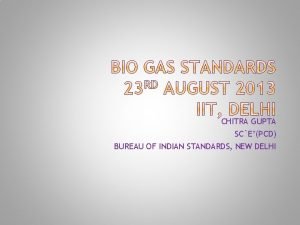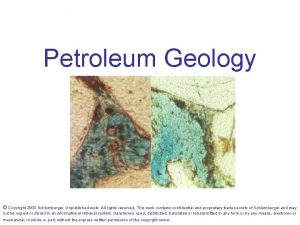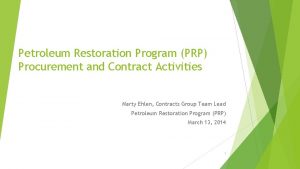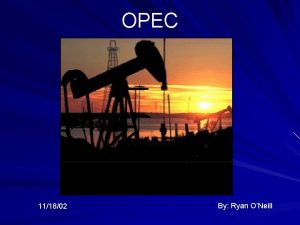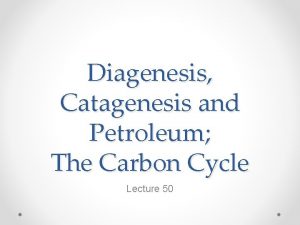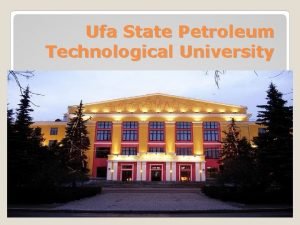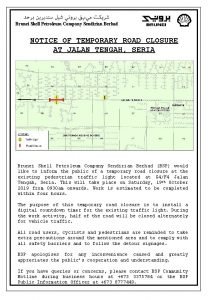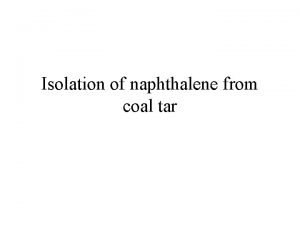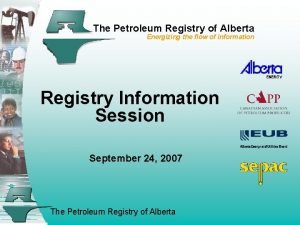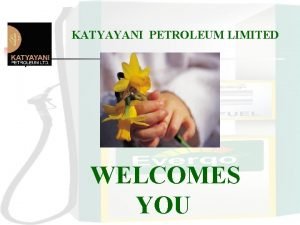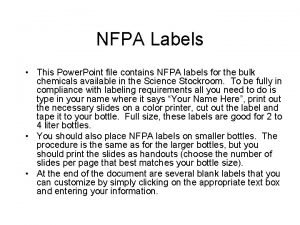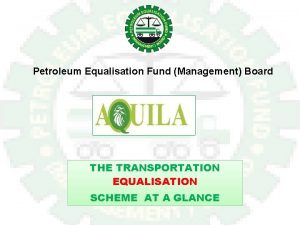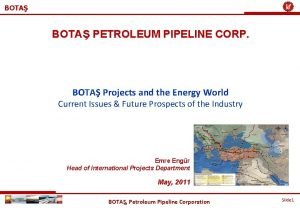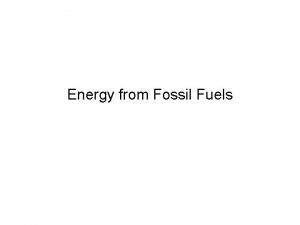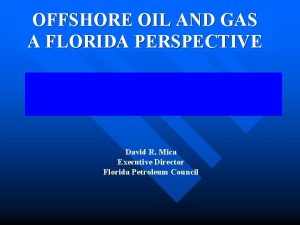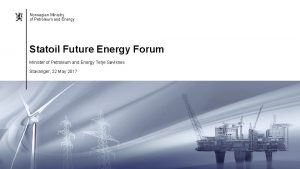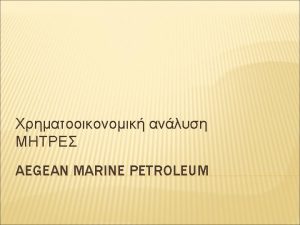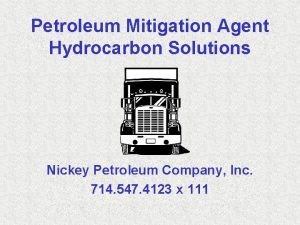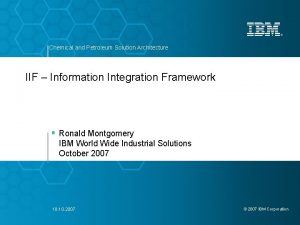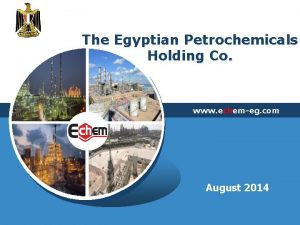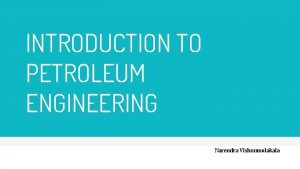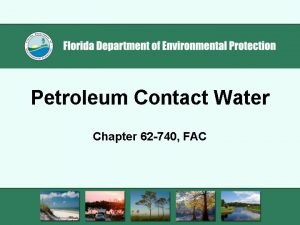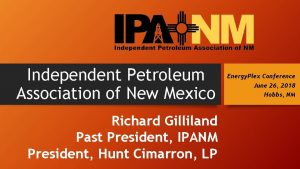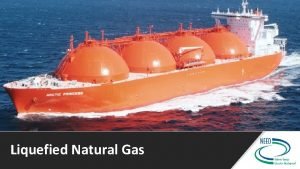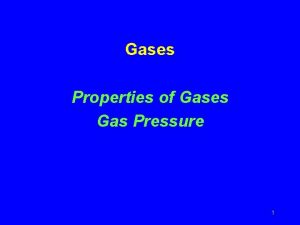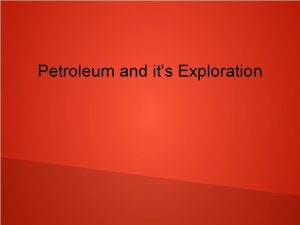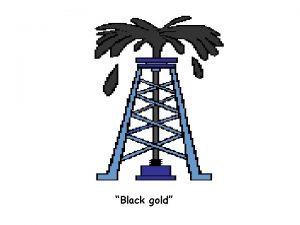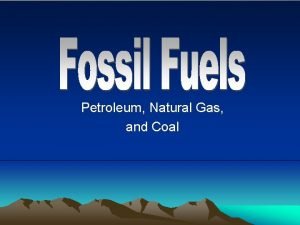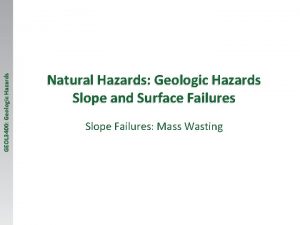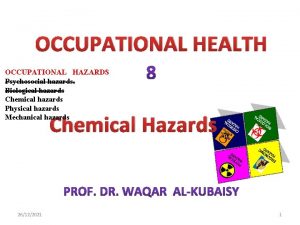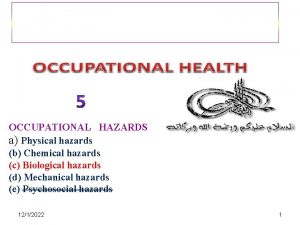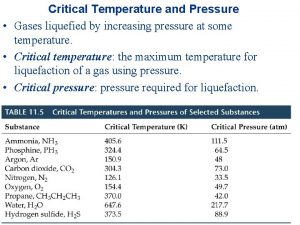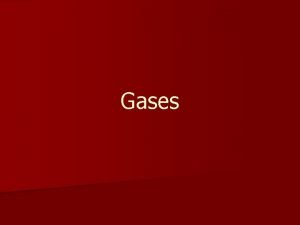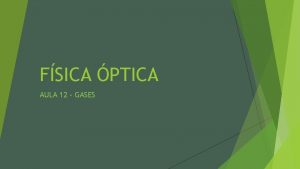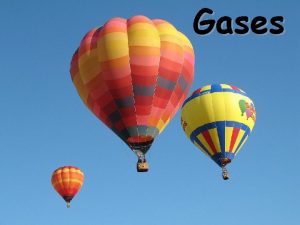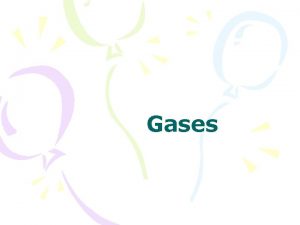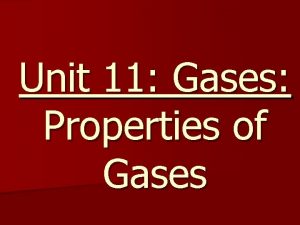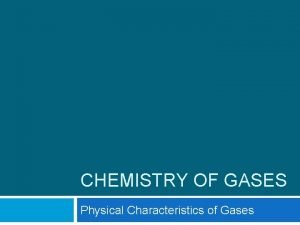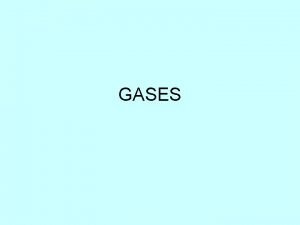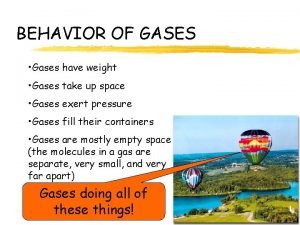Liquefied Petroleum Gases Hazards of LP gas v

















































- Slides: 49

Liquefied Petroleum Gases

Hazards of LP gas v Flammable v Asphyxiant 1 a

Hazards of LP gas v Can freeze tissue on contact v Exposure limits • Butane - 800 ppm • Propane - 1000 ppm 1 b

Hazards of LP gas v Container markings • Markings to identify compliance • Name and address of supplier on container • Water capacity of the container • Designed pressure in psig 1 c

Hazards of LP gas v Container markings • Wording • Tare weight • Markings indicating maximum fill level • Outside surface area in square feet 1 d

Storage and handling requirements v Odorization v Containers, equipment, systems must be DOT-approved v Welding procedures for containers 2 a

Location of containers and regulation equipment v Containers and first-stage equipment must be located outside of buildings v Location of containers with respect to nearest important building 3 a

Location of containers and regulation equipment v Containers installed for use cannot be stacked v Ignitable materials within 10 feet of containers must be removed 3 b

Location of containers and regulation equipment v Minimum separation distances v Use dikes, diversion curbs, grading to prevent accumulation of flammable liquids 3 c

Location of containers and regulation equipment v LPG containers cannot be located in diked areas for flammable liquid tanks 3 d

Container valves, accessories, safety devices v Valves, fittings, and accessories connected directly to the container must be rated to a working pressure of 250 p. s. I. g. v Must be suitable for LP-gas service - can’t be made of cast iron 4 a

Container valves, accessories, safety devices v Connections to containers must have shutoff valves v Piping must be wrought iron or steel, brass, copper, aluminum alloy v Piping must met ANSI standards 4 b

Container valves, accessories, safety devices v Vapor piping and pipe joints must be suitable for operating pressures v Tubing must be seamless v Fittings must be appropriate for the operating pressures 4 c

Container valves, accessories, safety devices v The use of threaded cast iron pipe fittings is prohibited v Strainers, regulators, meters, compressors, and pumps are not to be considered pipe fittings 4 d

Container valves, accessories, safety devices v Hose must be made of materials resistant to liquid and vapor LPgas v Hose subjected to container pressure must be marked “LPGas” or “LPG” within 10 -foot intervals 4 e

Container valves, accessories, safety devices v Hose and hose connections must meet bursting pressure requirements v Containers and vaporizers must be provided with safety relief valves 4 f

Container valves, accessories, safety devices v Safety relief valves must be spring-loaded type 4 g

Container valves, accessories, safety devices v Valves must allow free venting to the outer air at least 5 feet away from any building opening v The rate of discharge must meet the specifications of the regulation 4 h

Container valves, accessories, safety devices v Safety relief valves must be marked with information about discharge pressures, rates v All piping and hose must be tested after assembly 4 i

Vaporizers and vaporizer housings v Indirect-fired vaporizers using steam or water must meet ASME codes 5 a

Vaporizers and vaporizer housings v Vaporizers must be marked with • code of the construction specifications • allowable working pressure and temperature • sum of the outside surface area • inside heat exchange surface area • name and symbol of the manufacturer 5 b

Filling densities v Defined as the percent ratio of the weight of the gas in a container to the weight of water the container will hold at 60 degrees F 6 a

Requirements for LPG in buildings v Restrictions exist for piping vapor at pressures in excess of 20 p. s. i. g into buildings v Liquid may be permitted in buildings only when the buildings meet certain construction requirements 7 a

Transferring liquids v One attendant must remain close to the transfer connection v The owner of the container must authorize filling and use v “Single-trip containers” and “Non-refillable containers” can not be refilled or reused 8 a

Transferring liquids v Maintain required distances between filling point and nearest building v Charging and gauging of fuel supply containers v Maximum vapor pressure 8 b

Transferring liquids v Transfer equipment v Shutting down equipment v Shut down open flames prior to refueling 8 c

Loading and unloading v Tank car sidings must be level v “Tank Car Connected” signs must be in place at active ends v Block car the wheels of the tanks 9 a

Loading and unloading v Have times an attendant present at all v Equipment used during loading/unloading 9 b

Loading and unloading v Loading/unloading factors • Proximity to railroads/highways • Nearby buildings • Nature of occupancy • Topography • Construction type • Number of cars that can be loaded/unloaded at one time • Frequency of loading/unloading 9 c

Electrical equipment v Must meet requirements of 29 CFR 1910 Subpart S v Review Table H-28 v Keep open flames away from vaporizer rooms, pumphouses, charging rooms 10 a

Liquid-level gauging devices v Containers are equipped with a fixed liquid-level gauge v Gauges must have a design working pressure of 250 p. s. i. g. 11 a

Appliances v Appliances must be properly converted, adapted, and tested v Unattended heaters must have automatic shut off device v Appliances must be installed in accordance with NFPA standards 12 a

Cylinder systems v Containers must be marked in accordance with DOT regulations 13 a

Cylinder systems v Cylinder systems include: • Containers • Container valves • Connectors • Manifold valve assembly • Regulators • Relief valves 13 b

Systems that use otherthan-DOT approved containers v Watch service is necessary for systems that have a water capacity of 2, 000 gallons or more v Watch service must be trained in basic LPG requirements 14 a

LPG as a motor fuel v Passenger-carrying vehicles may not be fueled with passengers on board v Industrial trucks with permanently mounted containers must be charged outdoors 15 a

LPG as a motor fuel v Shut down engines while fueling v Secure fuel containers 16 a

Storage of containers awaiting use or resale v Locate so as to minimize exposure to: • excessive rise of temperature • physical damage • tampering v Do not locate near exits, stairways 17 a

LPG systems installation v Applies to: • LPG system installation on vehicles used for commercial and construction operations • exchangeable container systems with container capacities greater than 105 pounds water capacity • systems using containers permanently mounted on vehicles 18 a

LPG service stations v Design pressure v Classification containers of storage 19 a

LPG service stations v Container valves, accessories, relief valves v Capacity of liquid containers 19 b

LPG service stations: installation of storage containers v Minimum distances v Remove ignitable material within 10 feet of containers v Separation distances 19 c

LPG service stations: installation of storage containers v Diking, diversion curbs, grading v Do not locate LPG containers near diked areas for flammable liquid containers v Contraction, expansion, vibration, settling 19 d

LPG service stations: installation of storage containers v Flotation v Aboveground containers v Underground containers 19 d

LPG service stations: installation of storage containers v Protection of container fittings, piping, valves v Transport points truck unloading v Equipment used for pumps and dispensing devices 19 e

LPG service stations: installation of storage containers v No smoking in fueling areas post signs v Shut off motors when fueling v Electrical equipment requirements v Approved fire extinguishers 19 f

Summary of main points v Hazards v Basic of LPG requirements v Equipment and systems v Transferring of liquids 20 a

Summary of main points v Loading/unloading of tank cars and transport trucks v DOT container systems v Non-DOT container systems 20 b

Summary of main points v LPG as motor fuel v Storage of containers awaiting use or resale v LPG installation on commercial vehicles v LPG service stations 20 c
 Lpg specific gravity
Lpg specific gravity Liquefied petroleum gas properties
Liquefied petroleum gas properties Lignocellulose
Lignocellulose Petroleum and natural gas formation
Petroleum and natural gas formation Pseudo reduced specific volume
Pseudo reduced specific volume Bhopal gas tragedy reason
Bhopal gas tragedy reason Poisonous gas leaked in bhopal gas tragedy
Poisonous gas leaked in bhopal gas tragedy An ideal gas is an imaginary gas
An ideal gas is an imaginary gas Gas leaked in bhopal gas tragedy
Gas leaked in bhopal gas tragedy Difference between ideal gas and real gas
Difference between ideal gas and real gas Gas law
Gas law Gas reale e gas ideale
Gas reale e gas ideale Gas exchange key events in gas exchange
Gas exchange key events in gas exchange Persamaan arrhenius
Persamaan arrhenius Computational fluid dynamics
Computational fluid dynamics Flue gas desulfurisation gas filter
Flue gas desulfurisation gas filter Mineral resources and petroleum authority of mongolia
Mineral resources and petroleum authority of mongolia Ikarus kuwait
Ikarus kuwait Petroleum registry
Petroleum registry Mnemonic for crude oil fractions
Mnemonic for crude oil fractions Pllite
Pllite Kesan penerokaan hutan terhadap manusia
Kesan penerokaan hutan terhadap manusia Petroleum equalisation fund (management) board
Petroleum equalisation fund (management) board Professional petroleum data management association
Professional petroleum data management association Bharat petroleum
Bharat petroleum Petroleum system
Petroleum system Pacs prp
Pacs prp Petroleum facts
Petroleum facts Petroleum
Petroleum Catagenesis in petroleum
Catagenesis in petroleum Ufa state petroleum technical university
Ufa state petroleum technical university Brunei shell petroleum
Brunei shell petroleum Synthesis of naphthalene from petroleum
Synthesis of naphthalene from petroleum Petroleum ether composition
Petroleum ether composition Petroleum registry
Petroleum registry Katyayani petroleum ltd
Katyayani petroleum ltd Petroleum ether nfpa
Petroleum ether nfpa Pefmb
Pefmb Botas petroleum pipeline corporation
Botas petroleum pipeline corporation What are the environmental impacts of fossil fuels
What are the environmental impacts of fossil fuels Florida petroleum council
Florida petroleum council Statoil
Statoil Aegean marine petroleum network inc
Aegean marine petroleum network inc Nickey petroleum
Nickey petroleum Chemical and petroleum solutions
Chemical and petroleum solutions Egyptian petrochemicals holding company (echem)
Egyptian petrochemicals holding company (echem) Petroleum engineering pros and cons
Petroleum engineering pros and cons Petroleum contact water
Petroleum contact water Petroleum geoscience
Petroleum geoscience Independent petroleum association of new mexico
Independent petroleum association of new mexico
